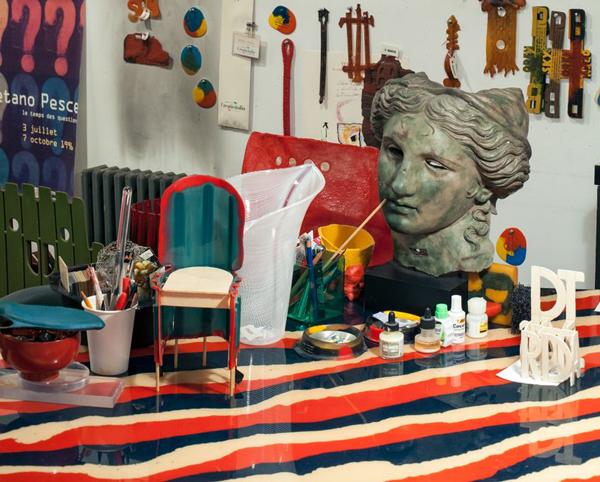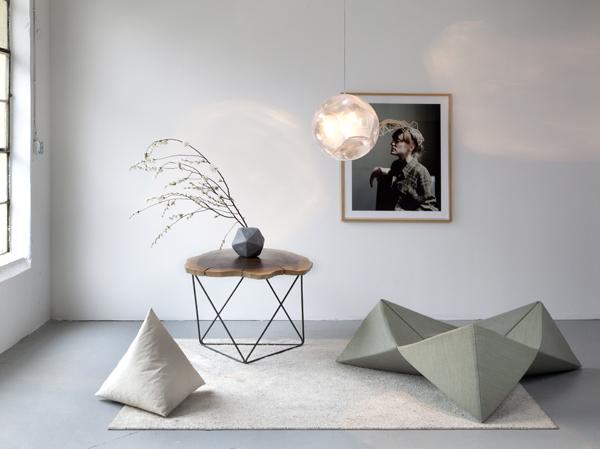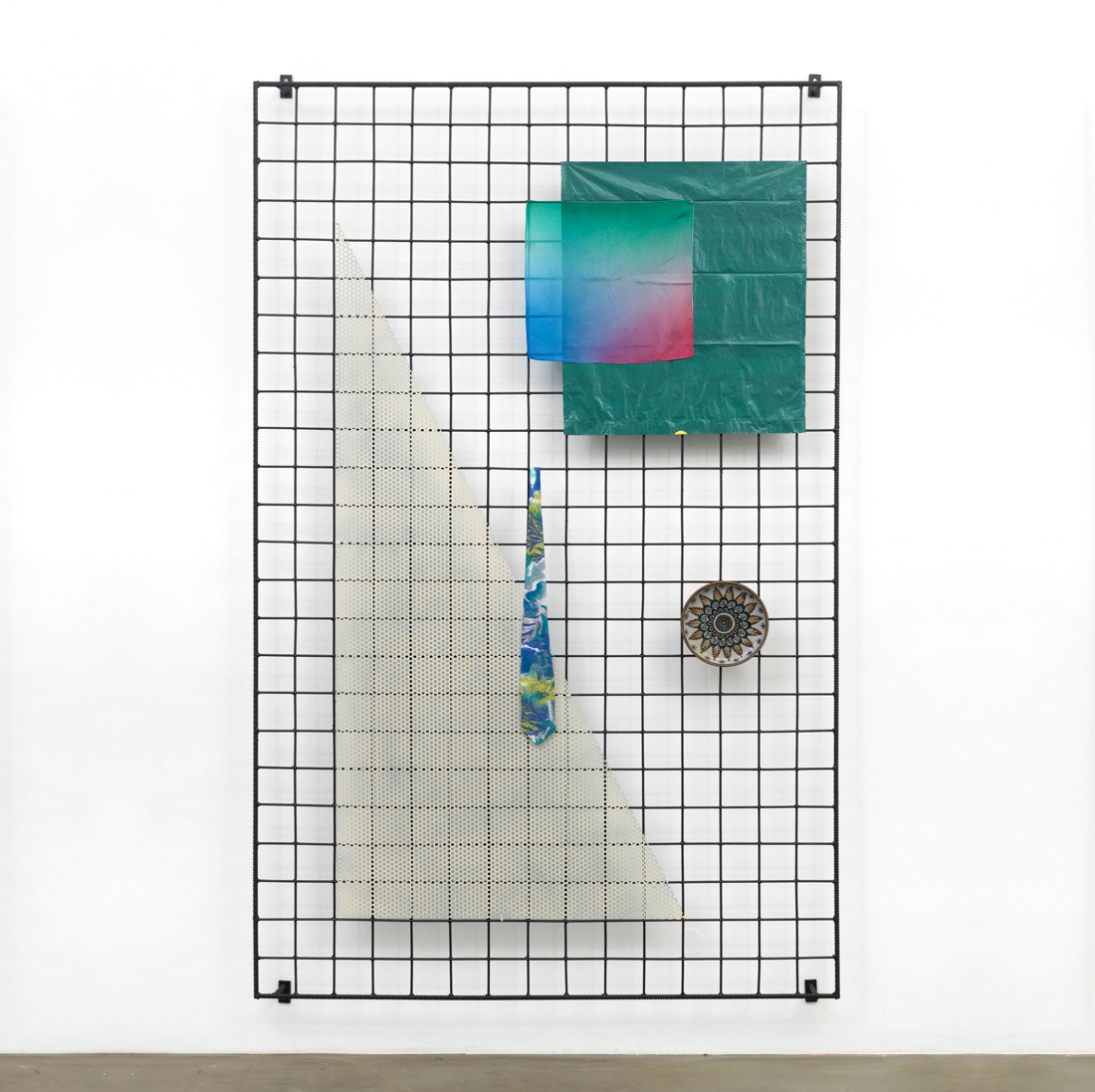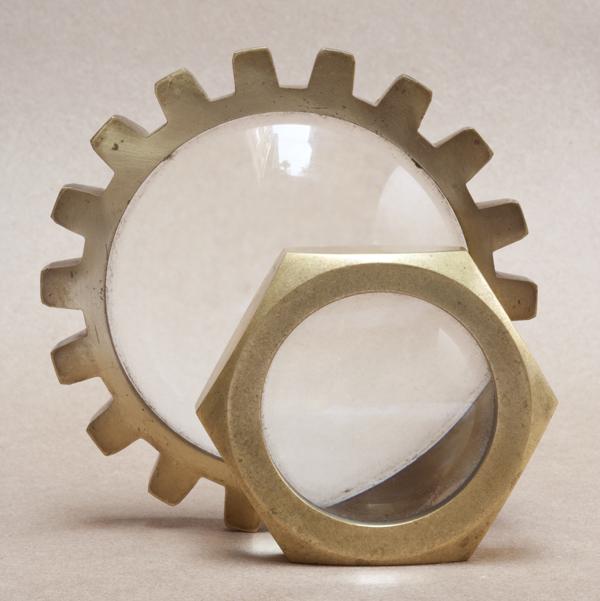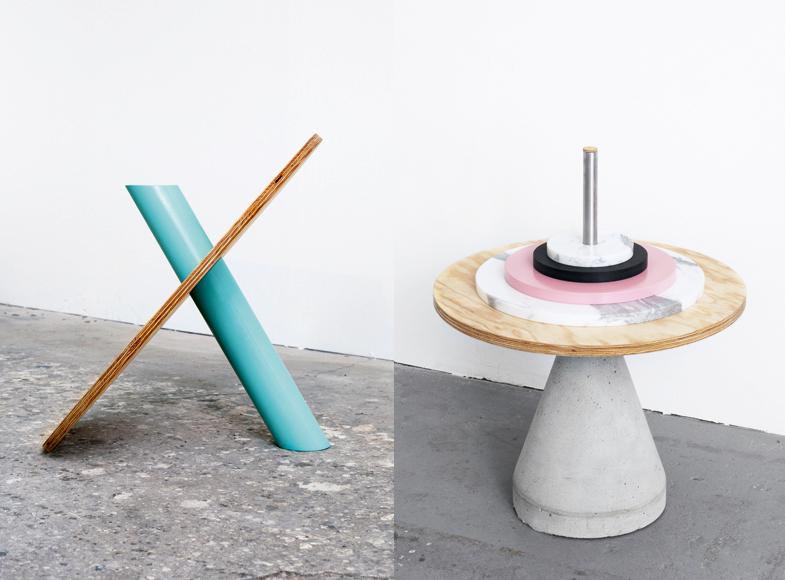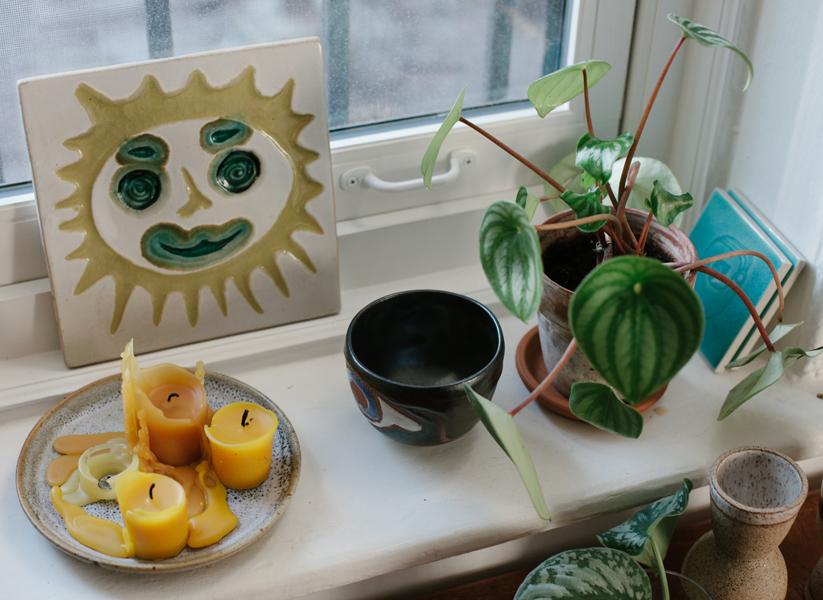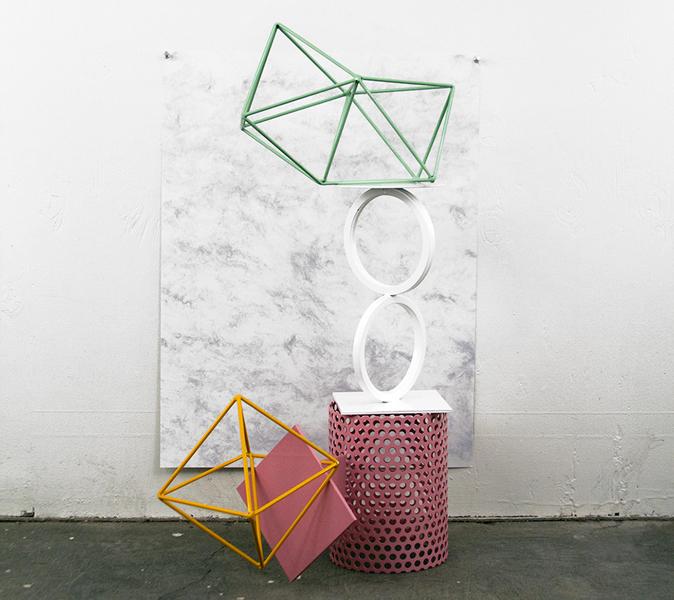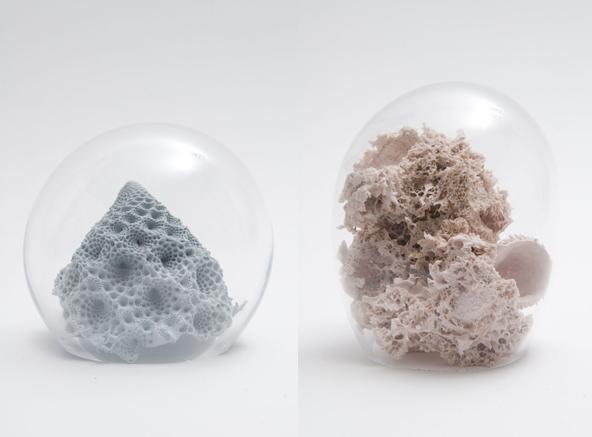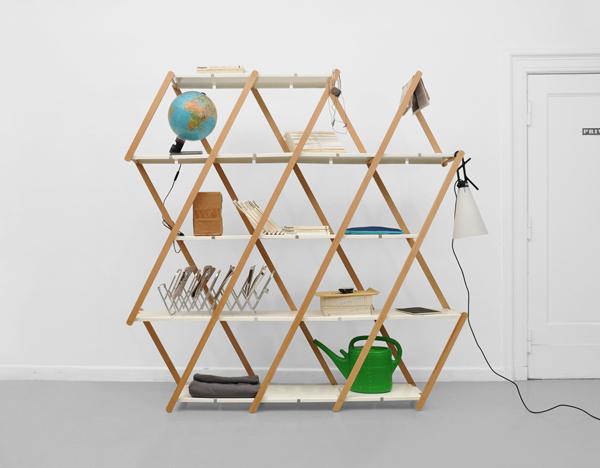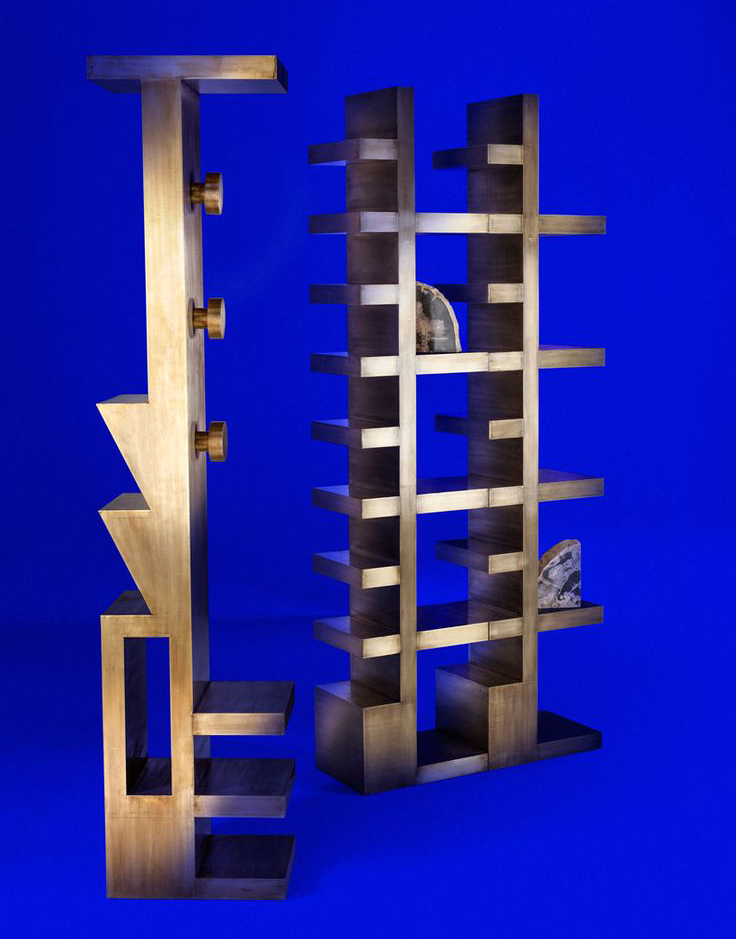
03.25.13
Sighted
Tom Dixon’s New Mass Coat and Book Stands
Tom Dixon has long been considered a master of metal (thanks, famously, to an early motorcycle accident requiring extensive bike repairs for which he learned, then fell in love with, welding). So we weren't the least bit surprised when we received a press release this morning revealing the London designer's newest wares — set to be released in two weeks at the Milan Furniture Fair — that contained a veritable smorgasbord of copper, cast-iron, brass, and shiny stainless steel, with a small contingent of nickel-plated aluminum tables that pair the faceting of a cut gem with the roughed-up surface of a silver ingot. There was one thing that really stood out for us, though: two minimalist brass sculptures, each an imposing 6.5 feet tall, one for holding books and the other for hanging coats. They're so different from anything we've seen Dixon show lately that they almost beg the question as to what new wunderkind he's brought on staff, but either way, they're a win. Someone with good taste, a huge budget, and high ceilings is about to make us very jealous.
